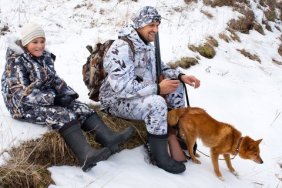 We’ve all seen it—heck, we’ve all been there in our own ways during our first few trips out—people committing some of the most popular outdoor blunders. We can comment all day about how little prep work such individuals do before their trip, and how they’re just not ready for what Mother Nature has up her sleeve, but to be honest, everyone makes mistakes when they first pick up an outdoor activity, especially backpacking. Today, we’ll take a closer look at some of backpacking’s most common rookie mistakes, in hopes that doing so will help others avoid committing them in the future.
We’ve all seen it—heck, we’ve all been there in our own ways during our first few trips out—people committing some of the most popular outdoor blunders. We can comment all day about how little prep work such individuals do before their trip, and how they’re just not ready for what Mother Nature has up her sleeve, but to be honest, everyone makes mistakes when they first pick up an outdoor activity, especially backpacking. Today, we’ll take a closer look at some of backpacking’s most common rookie mistakes, in hopes that doing so will help others avoid committing them in the future.
One of the biggest lapses in planning I’ve seen—and, yes, I’ve been there myself—is when backpackers hit the trail wearing a pair of jeans, or worse: tight or expensive jeans. What many beginners fail to consider is that denim is cotton, so jeans are a poor choice for any hike, especially in rainy or cold weather. Unlike wool and polyester fabrics, which wick away moisture form your skin, cotton actually retains moisture, and once cotton gets wet, it takes a long time to dry out. The moisture on your skin depletes body heat leaving you shivering in your boots and more susceptible to hypothermia. In fact, jeans are the worst of all cottons because they can actually ice up in below-freezing weather. Unless you’re heading out for a quick summer hike, it’s best to steer clear of jeans when you hit the trail.
I know chain department stores like Wal-Mart or Target sell inexpensive sleeping bags and tents, but I wouldn’t trust them between me and the outdoors any day of the week. Outdoor retailers do field work, conduct research, and listen to their consumers when it comes to the quality of gear they sell, which is why they specialize in it. It's perfectly fine to pick up your beef jerky, trail mix, and even propane canisters at your local department store, but if you want quality trail gear, it’s smart to spend a little more, drive a little further, and trust specialty outdoor stores and reliable brands.
Road maps and atlases are not trail maps. Thus, the map that helped you find the trailhead parking lot unfortunately will not be able to help you navigate the trail. Topographical maps are your best friend when it comes to backcountry navigation, and include features like rivers, ridges, and peaks, as well as key information that can help you further, like hiking mileage and trailhead locations. You can often find trail maps and guidebooks at book stores and visitor centers, and you can even find complete weekend planners for specific trails online, which include gear checklists, driving directions, and waypoints for dozens of popular trails.
When it comes to a first aid kit, beginners often go down one of two paths. They either forget to bring a first-aid kit altogether, or they pack an entire pharmacy. In reality, you need to bring a first aid kit that suits the length of your trip, the size of your group, individual medical needs, and your medical knowledge. This last piece is important, because if you don’t know how to use a first aid item, then it’s really just taking up space, adding weight, and you probably shouldn’t be carrying it. Packing obscure supplies you’ll probably never use in place of additional bandages and painkillers just doesn’t make sense.
If you read through the list above and once or twice thought to yourself, “Yup. I was THAT guy once,” then know that you’re not alone. Though we might not be willing to admit, the vast majority of us committed these blunders more than once and many of us probably still do. As I said, though, if you’re not doing much more than brisk strolls through your local woods or even light day hikes, then it’s not really a big deal, but more serious backpackers need to purge such errors from their habits. Be sure to return for a look at some more common mistakes committed on the trail.








